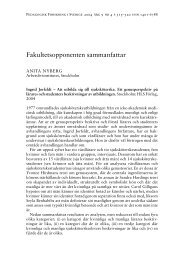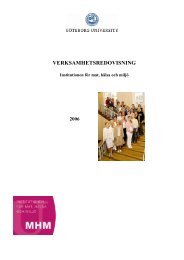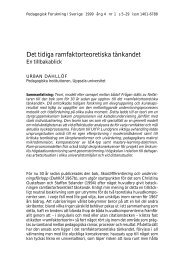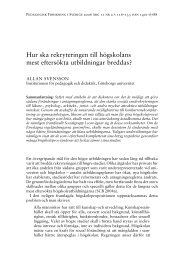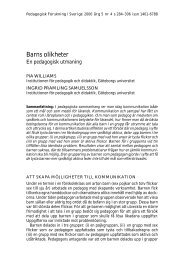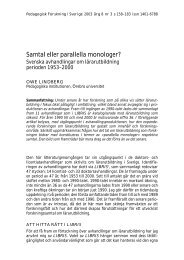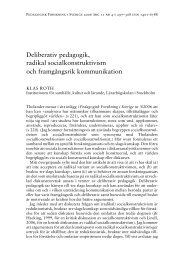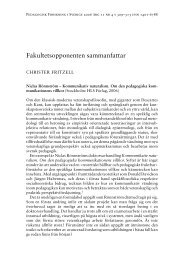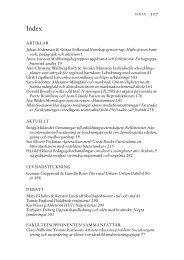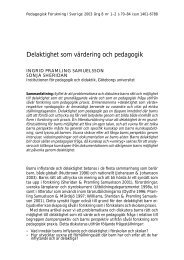University of Oslo Workshops June 29-30 Conference July 1-3 ...
University of Oslo Workshops June 29-30 Conference July 1-3 ...
University of Oslo Workshops June 29-30 Conference July 1-3 ...
You also want an ePaper? Increase the reach of your titles
YUMPU automatically turns print PDFs into web optimized ePapers that Google loves.
Track B TIMSS/PIRLS - Session 6<br />
Age, Schooling, and Methodological Issues in Score Estimation<br />
2 <strong>July</strong><br />
15:<strong>30</strong>-17:<strong>30</strong><br />
Room: AK 2137<br />
Chair: Hans Wagemaker<br />
Discussant: Eugenio Gonzalez<br />
The Effect <strong>of</strong> not Using Plausible Values when they should be: An illustration<br />
Using TIMSS 2007 Grade 8 Mathematics Data<br />
Ralf Carstens, IEA Data Processing and Research Center, Germany<br />
Dirk Hastedt, IEA Data Processing and Research Center, Germany<br />
Analyses using large-scale survey assessment databases such as those collected by TIMSS,<br />
PIRLS, ICCS, or PISA should use the data and the included plausible values (PV) as<br />
provided by the publishing organizations. Further, they should adhere to appropriate and<br />
intended computational procedures in the accompanying documentation to compute<br />
unbiased population estimates <strong>of</strong> student achievement that account for the administration<br />
<strong>of</strong> rotated instruments in which each students responds to a subset <strong>of</strong> items and not the<br />
entire item pool. Working with plausible values may seem overwhelming or cumbersome<br />
though and some researchers may be tempted to or actually do use analytical shortcuts or<br />
inappropriate scoring methods that lead to biased results and/or results that identify<br />
statistical significance in the comparisons <strong>of</strong> group-level statistics or regression analysis<br />
where the appropriate analytical procedure, given a survey’s design, would not have.<br />
Building on the convincing theoretical argument in favor <strong>of</strong> plausible values (PV) by von<br />
Davier, Gonzalez and Mislevy (2009), this paper seeks to illustrate the practical relevance<br />
<strong>of</strong> using the plausible values on the database file as intended in the context <strong>of</strong> the realworld,<br />
grade 8 mathematics data collected by TIMSS 2007. The paper addresses the<br />
adverse effects <strong>of</strong> incorrectly using the provided plausible values, more specifically using<br />
averages <strong>of</strong> plausible values or just one out <strong>of</strong> the five provided values, in the context <strong>of</strong><br />
country-level and group-level comparisons. In addition, we use common IRT scoring<br />
methods and compare estimates based on these to the score estimates included in the<br />
TIMSS 2007 international reports (Mullis, Martin, & Foy, 2008).<br />
The results show that inappropriate use <strong>of</strong> the plausible values or alternative scoring<br />
methods can entail a substantial departure from the estimates obtained from correct and<br />
intended analysis and consequently inferences to the studied populations. The findings are<br />
used to convince researchers to use the plausible values correctly and as designed, that<br />
there is no need to rely on computational shortcuts and that user friendly s<strong>of</strong>tware to<br />
achieve this is readily available.<br />
Keywords: plausible values; analytical shortcuts; imputation variance; scoring methods;<br />
incorrect use<br />
55



